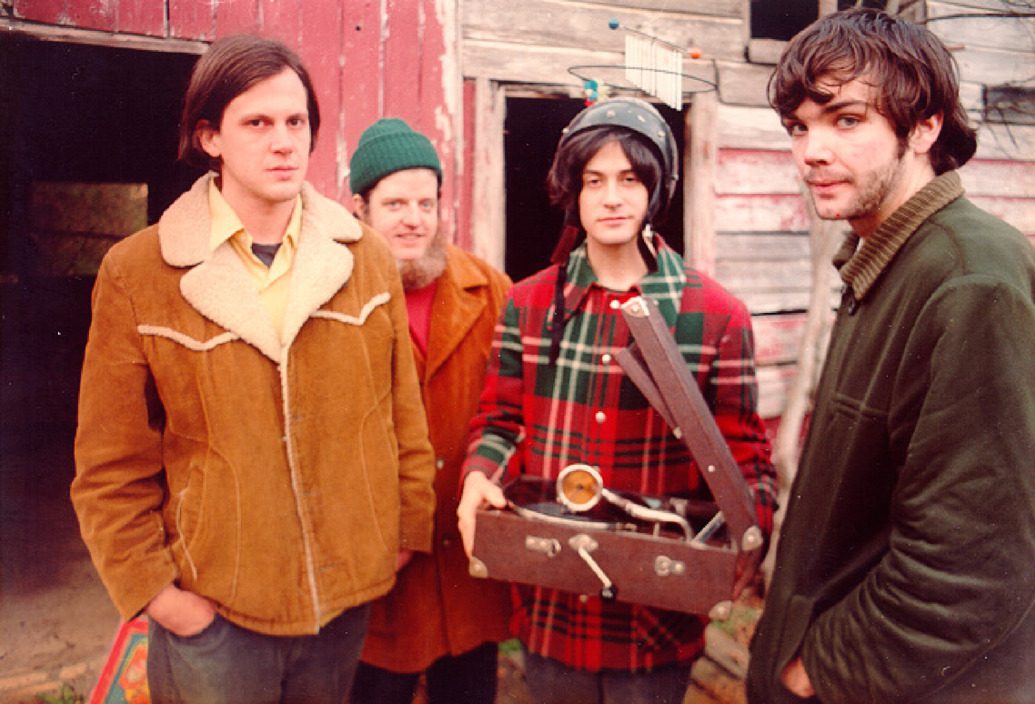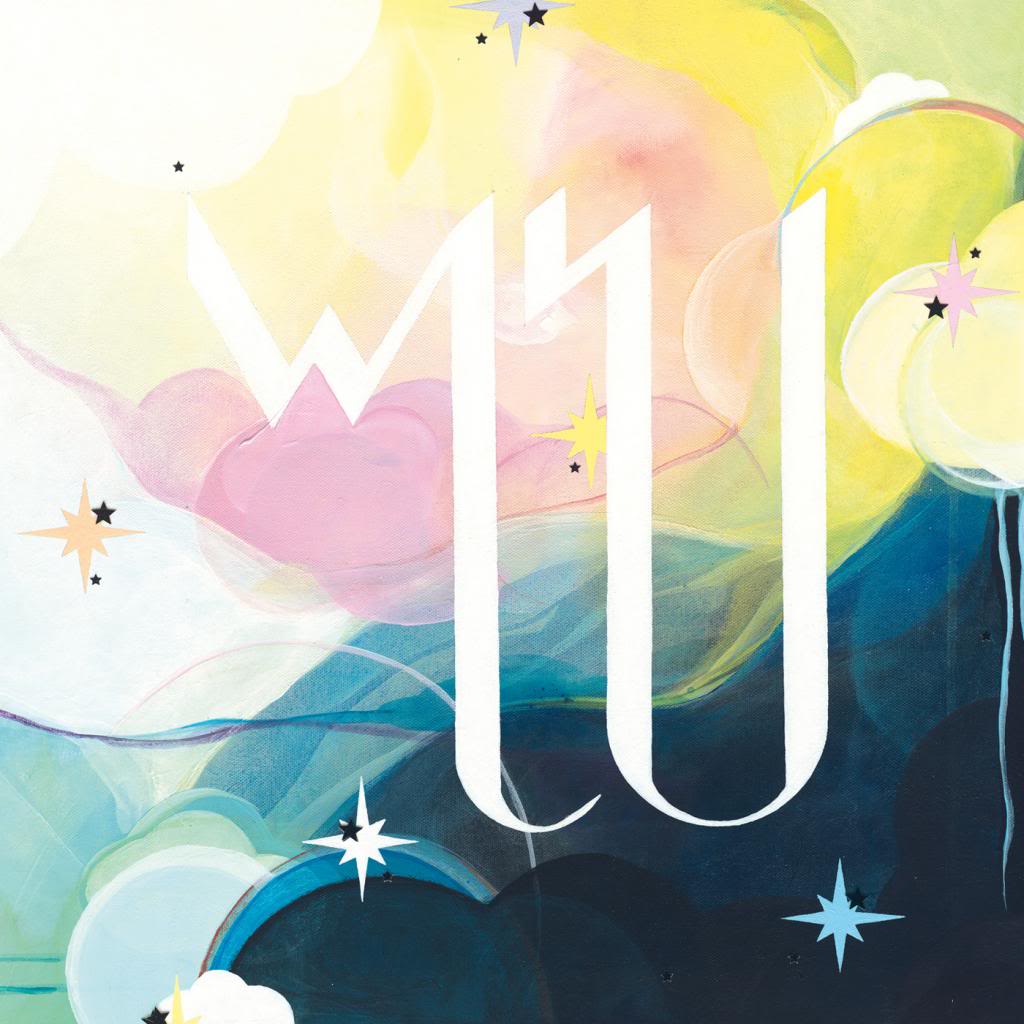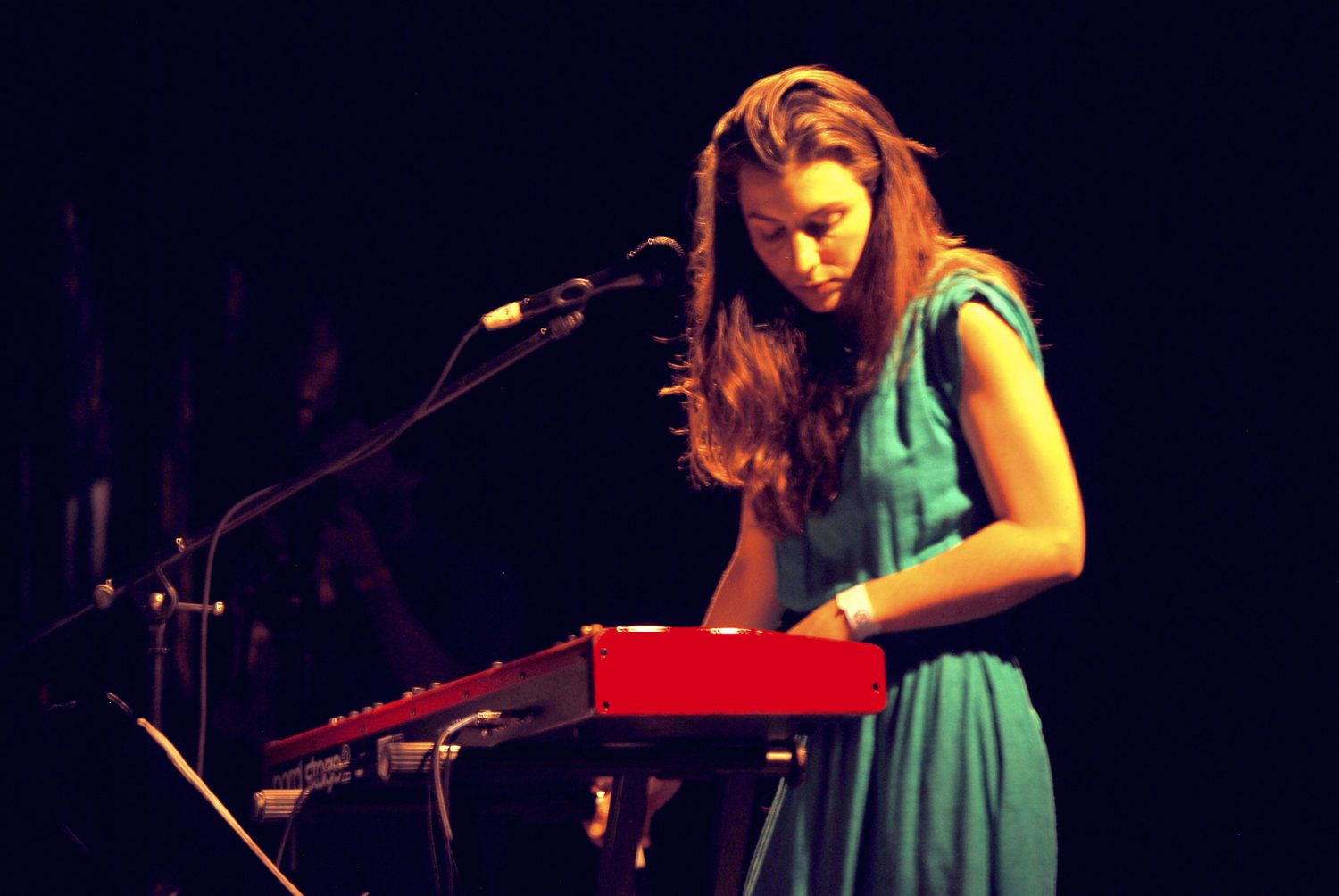
[fusion_builder_container hundred_percent=”yes” overflow=”visible”][fusion_builder_row][fusion_builder_column type=”1_1″ background_position=”left top” background_color=”” border_size=”” border_color=”” border_style=”solid” spacing=”yes” background_image=”” background_repeat=”no-repeat” padding=”” margin_top=”0px” margin_bottom=”0px” class=”” id=”” animation_type=”” animation_speed=”0.3″ animation_direction=”left” hide_on_mobile=”no” center_content=”no” min_height=”none”]
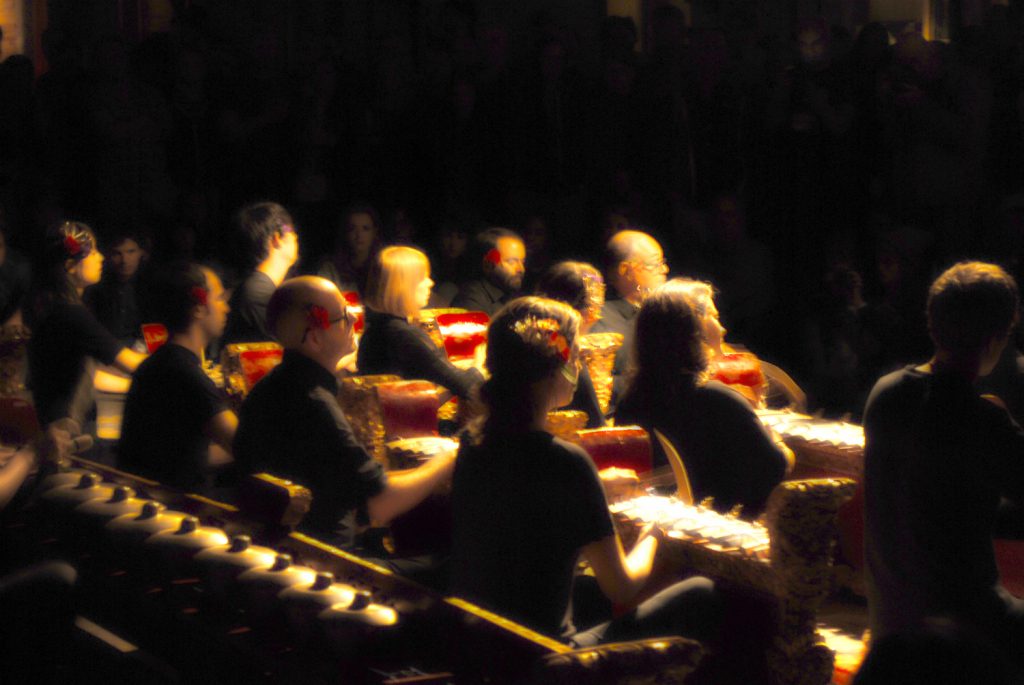
Touted as a cure to “festival fatigue,” this past weekend marked Basilica SoundScape’s third year in Hudson, NY, two hours north of the city. Nestled in that bucolic landscape hulks a cavernous 19th century foundry revamped and rechristened by Hole’s Melissa Auf der Mar and her partner, filmmaker Tony Stone, as an arts collective. With Brandon Stosuy (of Pitchfork fame) and Leg Up! Management’s Brian De Ran organizing a line-up of experimental music’s best and brightest, the shindig also boasts artisanal foods, art installations, and an avant-garde craft fair.
In many, many ways, it is the quintessential “anti-festival” – the only act I remember seeing on actual festival bills this summer was Deafheaven, who played Saturday night. It’s so different, in fact, that you begin to wonder why or how its organizers would even mention “festival” in the same breath as “SoundScape” except as a framing device for people who wouldn’t care in the first place and certainly wouldn’t be attending – those people that like festivals even, who plan to meet up with their crop-topped and cut-offed friends by carrying around some ten-foot, vaguely humorous sign or balloon animal all weekend, those people that don’t get festival fatigue because they live for any opportunity whatsoever to drop molly in a field with a hundred thousand rave-orbing Skrillex devotees. With capital-F Festivals popping up in or around nearly every major American city, this is no longer a market cornered by Coachella and Bonnaroo, but they all have the same vague feel – wide open grounds, multiple stages that make it impossible to see every act, overpriced tickets and overpriced concessions, ‘roid-raging security, and mostly unimaginative line-ups. The thing is, tons of people still go to these events as if it’s the only way to see live music. These people need no “anti-festival.” So who, then, is something like Basilica SoundScape really for?
Unlike most mid-sized towns with relatively small music scenes, New York City’s “scene” is pretty diffused due to its sheer size. But there is a specific intersection of journalists, musicians, labels, managers, PR teams, and their social circles who form the sometimes insular “insider” bulk; this is the subset of people Basilica was curated by and for, and they headed up to Hudson in droves. Though supposedly SoundScape attracts locals, most of the faces in the crowd were familiar to anyone tangentially related to the industry. Much the way SXSW can feel like a vacation for music-industry folks and culture critics (even though we’re all still “working”), SoundScape felt like a bizarro (though admittedly awesome) tailor-made alternate universe for an incredibly niche crowd. While that’s not exactly a bad thing – most of us do what we do because we are actually passionate about bands like Swans – there was a different kind of fatigue to the whole thing, even if it wasn’t “festival fatigue” so to speak.
[/fusion_builder_column][fusion_builder_column type=”1_1″ background_position=”left top” background_color=”” border_size=”” border_color=”” border_style=”solid” spacing=”yes” background_image=”” background_repeat=”no-repeat” padding=”” margin_top=”0px” margin_bottom=”0px” class=”” id=”” animation_type=”” animation_speed=”0.3″ animation_direction=”left” hide_on_mobile=”no” center_content=”no” min_height=”none”]
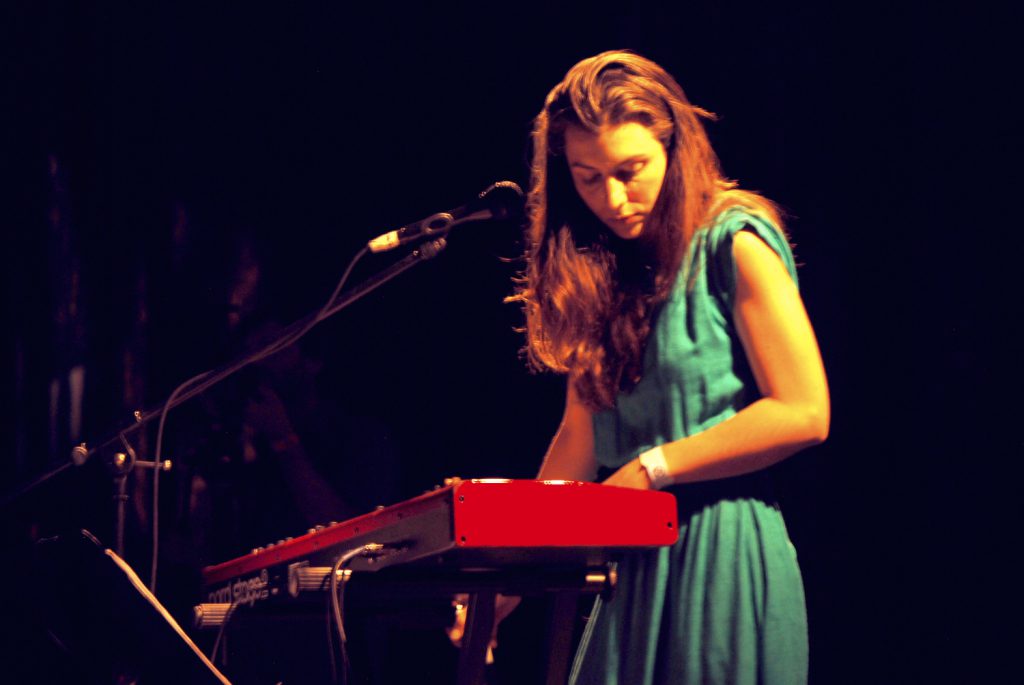
That being said, Friday’s performances were breathtaking. The most appropriately-named band on the roster, Endless Boogie, stretched their searing psych jams to their limits. Julia Holter’s performance was a personal highlight, her hands deftly springing over her keyboard, her vocals emotive and grandiose enough to fill the entire space but remaining somehow intimate. With a more sparse set-up than some of her typical full-band performances, it was a treat to see her play solo. Following her performance, Gamelan Dharma Swara filled the floor of Basilica Hudson, observers posting up all around the ensemble of twenty or so seated behind traditional Balinese percussion instruments. Xylophone-esque, the bars are tamped by hand after striking with mallets, their ornate golden forms producing tones just as gilded, the whole sound a complete wonder. That segued into the transformative drone of electronic wunderkind Tim Hecker, whose complex compositions act on the senses in peculiar ways. His low-end is amped to earth-shattering proportions, so as to produce a very physical sensation in the throat and chest (and even skull) while washes of shimmering melody play just beneath. It’s the best kind of thing to zone out to. Taken together, this onslaught of transcendent performances was worth the trip alone. Afterward, Arcade Fire’s Richard Reed Parry performed his inventive Music For Heart and Breath compositions, all of which are timed to the players’ own breath or heartbeats via stethoscope – a novel idea, although in such a cacophonous space full of distractions it unfortunately fell flat.
So, imagine now the type of person who would soak that all up while sneering at the idea of Outkast-and-Jack-White-headlined, corporate-sponsored Festivals – the music writers, the experimental composers, the record store clerks, the somewhat elistist Brooklynites who’d never be caught dead at Governor’s Ball (unless they were covering it for some internet publication or other). That’s who was there, and that’s who a thing like SoundScape is meant to impress. And yet, there wasn’t any real air of snobbery, because snobbery hinges on looking down at someone, and at Basilica, we’re all in the same discerningly curated boat, our sails full of our own good taste. And that is fine and good, and unsurprising, but let’s not pretend that SoundScape is solving any of festival culture’s actual problems, or even acting as a model for anything other than a DIY-ish version of something more similar to All Tomorrow’s Parties.
Really, one of the more innovative aspects of Basilica programming were the Saturday evening readings by Mish Way (of White Lung), Los Angeles poet Mira Gonzalez, and Perfect Pussy’s Meredith Graves. It’s an interesting concept to bring spoken word pieces into a lineup that features post-hardcore acts like Swans and Deafheaven, and the fact that all three readers were women felt progressive and uplifting. Graves’ piece was published in full on The Talkhouse and dealt with gendered double standards and examined authenticity through anecdotes about Andrew W.K. and the media’s treatment of Lana del Rey. It’s a bit of an odd comparison in some ways, Andrew W.K.’s “persona” having been invented prior to the popularity of the longform thinkpieces del Rey’s been such inspiration for, but at its heart was the very real feeling that female celebrities face far more scrutiny (and for that matter, scrutiny of a different breed) than men in entertainment ever do. Graves used Andrew W.K. as a talking point because she’d recently met him and familiarized herself with his backstory, but I couldn’t help but wish she’d left del Rey out of it and chosen instead to share her own struggle to be taken seriously or seen as authentic. Pop music is a whole other monster – something she touched on in her essay only briefly – because it reaches such a wide audience and by its very nature demands its performers have some sort of gag or gimmick, and that does manifest itself differently for women in pop than it does for men in pop. At Basilica SoundScape though, the kind of authenticity folks seemed most concerned with was proving their own, their presence at such a groundbreaking, culture-altering event the best sort of cache.
So Basilica SoundScape is absolutely worth attending if you truly appreciate a well-curated lineup in which the details and intersections behind every act are carefully thought out by its organizers. For those types of show-goers, SoundScape will likely continue to be that breath of fresh Autumn air as long as the gorgeous venue that hosts it stands. While it may alienate the mainstream festival attendees of today, hopefully SoundScape will act as a beacon that proves there’s always a different way – particularly for those that put big-box events together. If SoundScape can build on this year’s successes and continue the trend of innovation next year, even the Lollapalooza lovers are bound to notice.[/fusion_builder_column][/fusion_builder_row][/fusion_builder_container]


